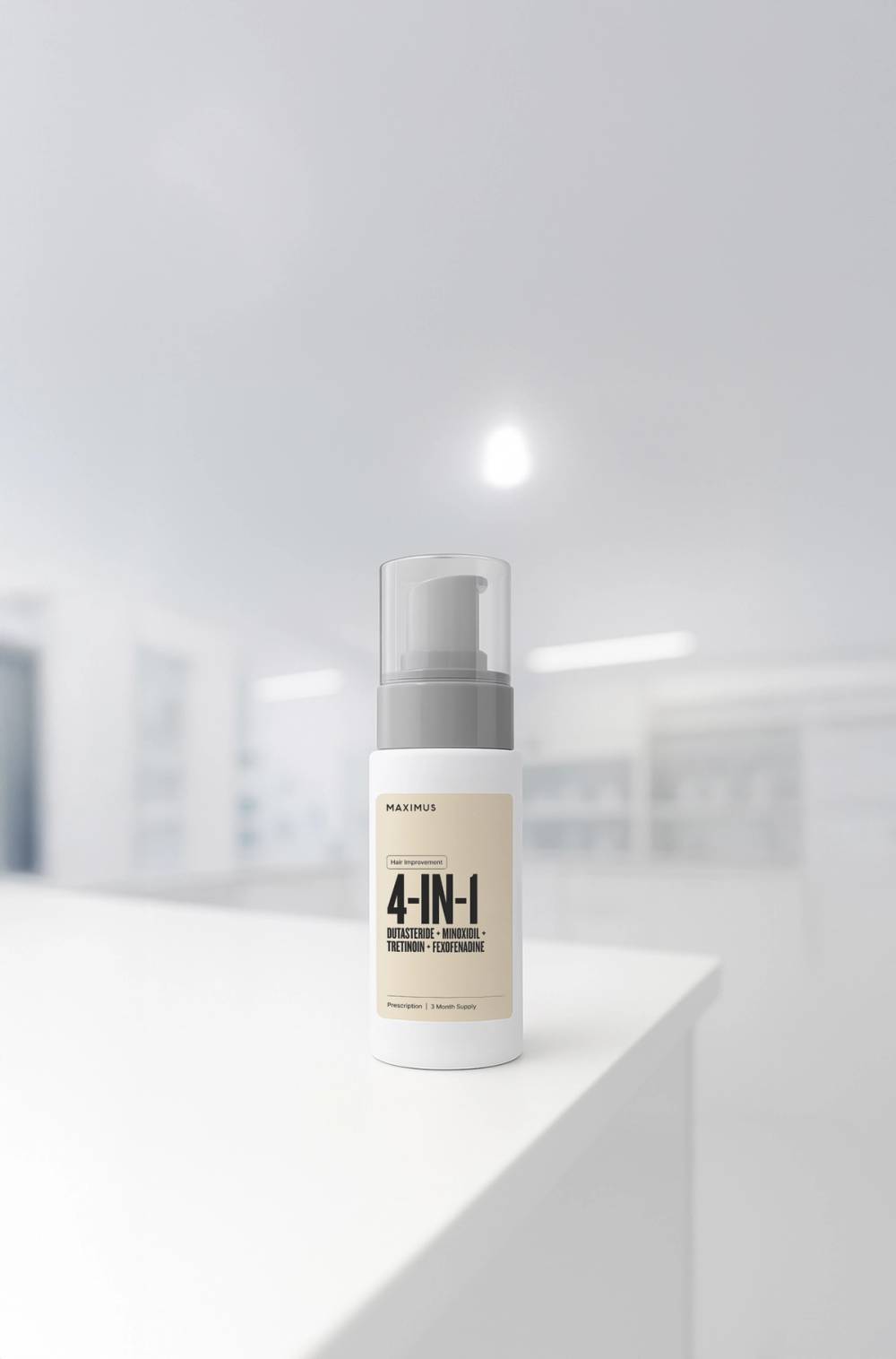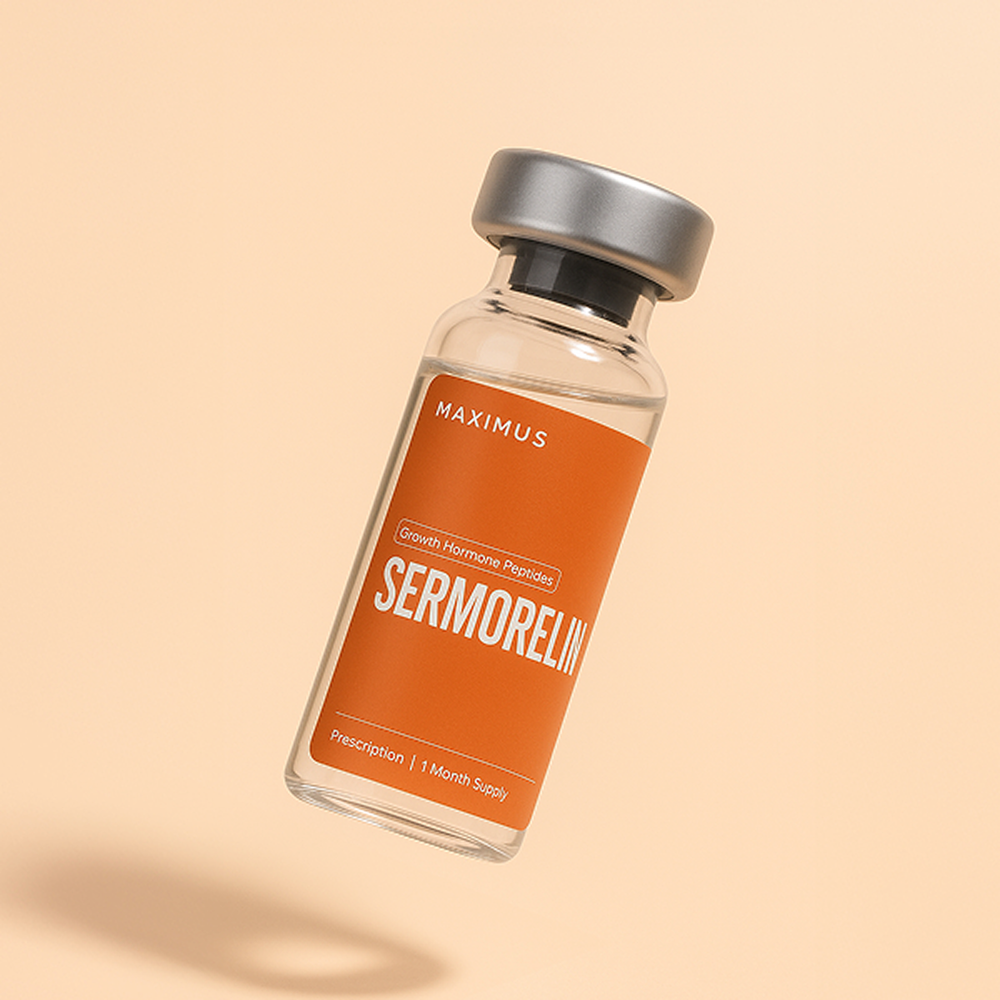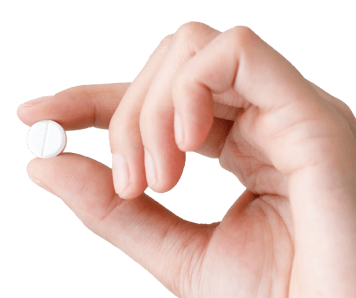Key takeaways:
- Just over 2% of men in the U.S. experience low testosterone, and its prevalence increases with age.
- Symptoms of low T include sexual dysfunction, fatigue, depression, increased body fat, loss of bone density, and brain fog.
- To determine whether someone is dealing with low testosterone levels, it’s important to do blood tests as well as look at the signs and symptoms they’re dealing with.
Low testosterone (T), also known as male hypogonadism, affects an estimated 2.1% of men in the U.S., and can contribute to symptoms like fatigue, decreased sex drive, erectile dysfunction, and decreased muscle mass.
In this article, we'll break down the most common signs of low testosterone, what defines a low testosterone level, and what you can do to improve your numbers and your symptoms.
What is low testosterone?
Low testosterone levels, as defined by the American Urology Association, are typically considered to be less than 300 nanograms per deciliter (ng/dL), but the clinical diagnosis of testosterone deficiency is only made when patients have low total testosterone levels combined with symptoms and/or signs. It's important to keep in mind that individual reference ranges can vary, and a healthcare provider should also always consider an individual's symptoms and medical history.
One reason why it’s important to look at symptoms as well is that many figures used to define standard or “normal” testosterone levels are based on general, population-level statistics that include a whole range of men, including those who may be sick, elderly, or overweight. The 300 ng/dL figure may not be as suitable among younger, fit, and healthy men.
For a more accurate picture, measuring your free testosterone, or bioavailable testosterone, can also be helpful. This is the type of testosterone that is free to circulate and available for use in the body.
The general medical term used to describe low testosterone levels is male hypogonadism, but there are two specific types — primary hypogonadism and secondary hypogonadism.
- Primary hypogonadism is when a problem in the testicles causes low testosterone levels. This can be due to a disease or injury.
- Secondary hypogonadism is when a problem with the pituitary gland or hypothalamus affects testosterone production, contributing to low testosterone levels.
How common is low testosterone?
Over the past few decades, low T has been affecting even younger men. Researchers aren’t entirely sure why this is happening, but believe it may be due to a number of different factors including rising rates of obesity, poor diet, less activity and exercise, smoking, and environmental toxins like those found in plastics.
What are the symptoms of low testosterone?
The symptoms and warning signs of low testosterone can be both physical and mental. Some of the most common include low libido, erectile dysfunction, fatigue, increased body fat, and mood changes. Here’s what you might experience if you have low T:
Sexual dysfunction
Erectile dysfunction, low libido, and decreased sexual satisfaction are all signs of low testosterone in men. Research shows that subjects with low T produce less nitric oxide, which is a chemical needed to achieve and maintain an erection. Low nitric oxide can also lead to a decrease in libido and energy levels, leading to reduced overall satisfaction during sex.
Fatigue
Low testosterone can impact the body’s energy levels, contributing to fatigue and tiredness. One reason for this is testosterone is involved in producing red blood cells, which carry oxygen to the muscles and tissues. Decreased testosterone levels can lead to lower red blood cell production, causing reduced oxygen delivery to the body's cells and tissues. This can result in a feeling of fatigue and exhaustion, even if you’re not engaging in tons of physical activity.
Research shows that testosterone also has a direct impact on motivation and drive. In a 2019 study of 173 men, testosterone treatment was said to increase men’s motivation to compete for social status, both in men with low status and men who already had high status.
Depression and anxiety
Low testosterone has been associated with a high risk of depression, especially when the low levels are pertaining to "free testosterone," which is the type that is unbound and available for use in the body (also the type that’s not always tested for in a standard testosterone test).
In another study, researchers explain that low testosterone levels might be associated with various depression and anxiety symptoms, and that general well-being and quality of life are both functions of testosterone levels. Additionally, they noted that anxiolysis, which is a very relaxed state of sedation leading to calm and anxiety relief that can occur after taking a medication, is most likely modulated by testosterone through things like stress resilience, threat vigilance, and reward processing. The researchers hypothesize that testosterone may have this impact by working in four separate channels of anxiolysis, including reduction of general fear, reward processing, threat vigilance, and stress resilience.
More body fat
Low testosterone levels can lead to an increase in body fat, particularly around the abdomen, as well as a loss of muscle. Increased body fat can also have a negative impact on hormone regulation, further exacerbating low testosterone levels.
Loss of bone density
Maintaining bone density is crucial for preventing bone fractures and maintaining overall health. A significant loss of bone mineral density is among the most common signs of low testosterone in men. Studies have shown that in men with low T, reduced bone mineral density is associated with a significant increase in bone fractures.
Brain fog
Brain fog can be a symptom of low testosterone, and it can impact focus and memory. In some researchstudies, older men with low T levels performed below normal on verbal fluency tests, as well as with visual and spatial perception, attention, memory, and executive functioning.
Insomnia
Low testosterone has been shown to negatively affect overall sleep quality and responds positively to testosterone therapy. At the same time, the relationship between testosterone and sleep appears to be bidirectional, with poor sleep lowering daytime testosterone levels by 10% to 15% in one small study.
Enlarged breast tissue
Gynecomastia, or enlarged breast tissue in men, is often related to an estrogen and testosterone imbalance. Normally, men produce modest amounts of estrogen, responsible for regulating breast growth. But when the body produces excess amounts of estrogen or has low testosterone levels, the breasts may become bigger. Some symptoms of gynecomastia include swollen breast tissue, tenderness, and an increase in the size of the areola.
How is low testosterone diagnosed?
To diagnose low testosterone, your doctor will conduct blood tests to see your testosterone levels — this testing is usually done early in the day since testosterone levels tend to vary and are highest in the morning. Your doctor will also evaluate your symptoms. This is really important because a man can have testosterone levels that are technically in range, while still dealing with many common symptoms of low testosterone, like fatigue and erectile dysfunction.
A serum testosterone level above 300 ng/dL may be considered “normal,” but if you’re experiencing clinical symptoms of low testosterone, there may be room for improvement. Optimal T levels vary individually, so many doctors will assess all of your physical and mental symptoms rather than relying solely on numerical values.
The American Urology Association (AUA) recommends testing testosterone levels as well as assessing for signs or symptoms of low testosterone in order to diagnose testosterone deficiency.
To differentiate between primary and secondary hypogonadism, your doctor will check for specific indicators. People with primary hypogonadism often have low testosterone levels and normal to high levels of luteinizing hormone (LH) and follicle-stimulating hormone (FSH). In contrast, people with secondary hypogonadism exhibit low testosterone levels and normal or low levels of LH and FSH.
How can you treat low testosterone?
Available in many different forms, testosterone replacement therapy, or TRT, was the primary method used to treat low testosterone levels in men for many years. For men who have primary hypogonadism, meaning their low testosterone levels are caused by an issue with the testicles, this remains the only option. But even though TRT is highly effective at raising testosterone levels, this method comes with a variety of side effects, including a risk of infertility, meaning it’s probably not the best choice for men who hope to have biological children one day.
Now, there are numerous alternatives to TRT, such as selective estrogen receptor modulators (SERMs) like enclomiphene citrate. Unlike TRT, which shuts down your natural testosterone production and replaces it with a synthetic version of the hormone, enclomiphene stimulates your body to make more of its own testosterone by blocking estrogen receptors in the brain. When these receptors are blocked, the body secretes the hormones LH and FSH, which then signals the testes to make more testosterone and sperm. This medication has been shown to boost T levels and improve symptoms of low testosterone without impacting fertility.
Maximus has also found that combining oral testosterone, a shorter acting form of TRT, with enclomiphene allows you to benefit from the exogenous testosterone while maintaining fertility markers and testicular function. Learn more about Oral TRT+.
Disclaimer: The contents of this article, including, but not limited to, text, graphics, images, and other information, is for information purposes only and does not constitute medical advice. The information contained herein is not a substitute for and should never be relied upon for professional medical advice. The content is not meant to be complete or exhaustive or to be applicable to any specific individual's medical condition. You should consult a licensed healthcare professional before starting any health protocol and seek the advice of your physician or other medical professional if you have questions or concerns about a medical condition. Always talk to your doctor about the risks and benefits of any treatment. Never disregard or delay seeking professional medical advice or treatment because of something you have read on this site. Maximus does not recommend, endorse, or make any representation about the efficacy, appropriateness, or suitability of any specific test, products, procedures, treatments, services, opinions, healthcare providers or other information contained herein. Maximus is not responsible for, nor will they bear any liability for, the content provided herein or any actions or outcomes resulting from or related to its use.








